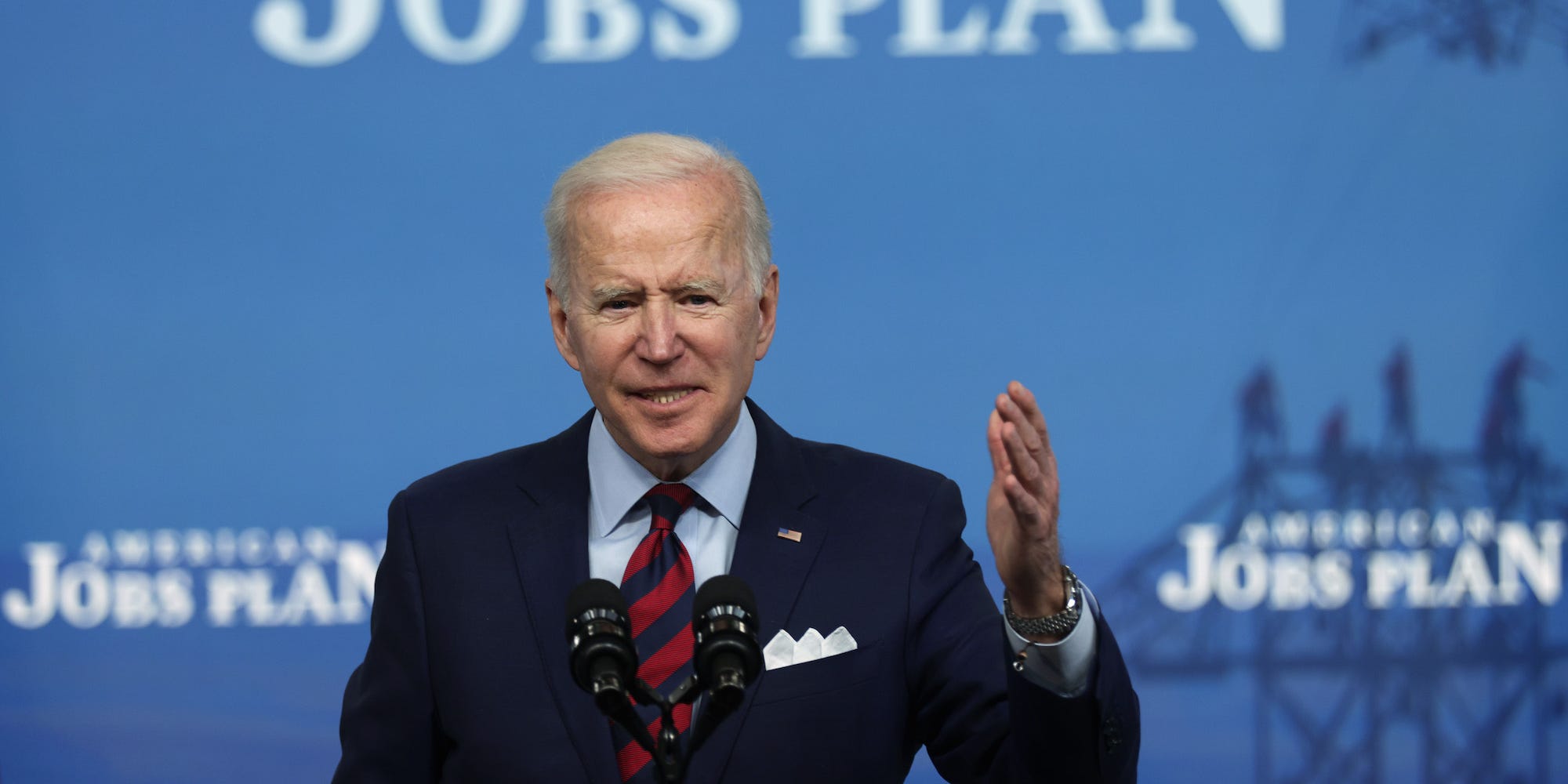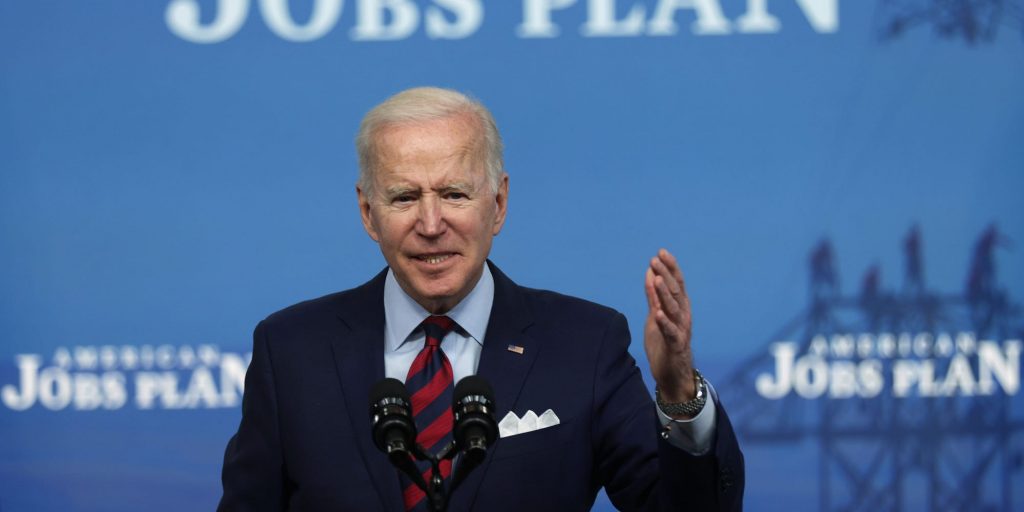
Alex Wong/Getty Images
- Biden's budget sees the economy booming for just two years before settling into slower growth.
- GDP is forecasted to grow 1.8% annually in the mid-2020s, weaker than growth after past recessions.
- The conservative estimates contrast with the Trump administration's pattern of underdelivering.
- See more stories on Insider's business page.
The Biden administration sees a strong economic rebound in the cards. What's forecasted afterward is less exciting.
President Joe Biden revealed his budget proposal for the 2022 fiscal year on Friday, laying out his plan to spend roughly $6 trillion on child care, clean-energy initiatives, and infrastructure improvements – and laying out a set of forecasts for US gross domestic product over the next several years.
The near-term estimates are promising. Biden sees GDP expanding 5.2% in 2021 and 3.2% in 2022, handily exceeding the annual growth seen just before the COVID-19 crisis.
But if the so-called Biden boom began with his $1.9 trillion stimulus plan in March, then his budget proposal sees it ending just two years later. The administration estimates GDP growth will slow to 2% in 2023 and then settle at 1.8% through 2027.
This is considerably weaker than recoveries from previous recessions. Annual growth averaged 2.3% from 2010 to 2019 as the US placed the Great Financial Crisis behind it. After the dot-com bubble burst in 2001, GDP grew at an average annual rate of 5.4% until 2008. And the output expanded at an annual pace of 4.4% from 1983 to 1989, after back-to-back recessions had kickstarted the decade.
Biden's forecast, then, is notably conservative. It contrasts with statements he's made publicly as recently as this week. Citing "independent experts" in a Thursday speech, the president said growth could come in at 6% or greater in 2021.
He added that his follow-up spending proposals would open the door to "faster" growth. Yet the rate of expansion forecasted in his budget sees growth slowing or holding steady through 2027.
It also falls short of forecasts from major Wall Street banks. Morgan Stanley sees growth coming in at 8% this year before cooling to 3.2% in 2022. Bank of America projects growth of 7% in 2021 and 5.5% the following year.
The modest estimates could reflect a desire to buck the trend seen throughout the Trump presidency, which underdelivered on growth, even before considering the economic collapse seen through 2020.
The Trump administration's final budget expected GDP growth to trend at 2.9% through 2030. While that was published before the pandemic, it still handily exceed the levels forecasted by Biden.
To be sure, other estimates in Biden's plan are much more optimistic. The White House expects the unemployment rate to fall from 6.1% to 5.5% by the end of 2021 and reach 4.1% by the end of 2022. The rate will then hold steady at 3.8% into 2031, just above the pre-pandemic lows of 3.5%, according to the plan.
Biden's latest spending proposals - which include trillions of dollars for infrastructure and family support - are also engineered to provide sustained investment instead of an immediate burst like that seen with his stimulus plan. Both packages are meant to be spent over the next eight to 10 years, and administration officials argue such a timeline would minimize their effect on inflation.
The White House has also stepped up its calls to invest in economic growth while interest rates sit at historic lows. While deficits are traditionally measured as debt to GDP, interest-payments to GDP are a better measure for sustainable spending, Treasury Secretary Janet Yellen told lawmakers in a Thursday hearing.
The government should spend on investments that lift output over the long term while debt-financing costs are so low, she added.
"The president's proposal will have a temporary period of spending and permanent increases that, beyond the budget window, will result in lower deficits and more tax revenue to support those expenditures," Yellen told a House Appropriations subcommittee.











